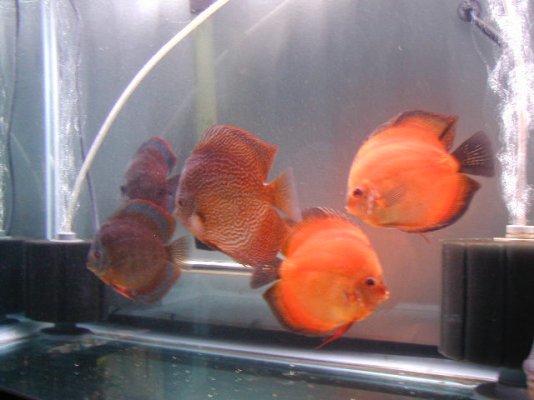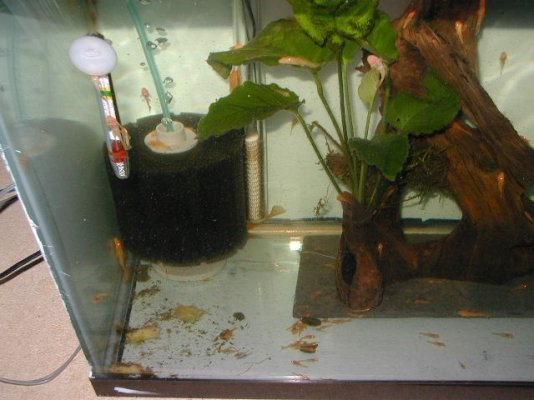GouramiFanatic
Aquarium Advice FINatic
- Joined
- Apr 2, 2005
- Messages
- 598
I have a pair of Pearl Gouramis and they're quickly becoming my favorite Gourami. I've been toying with the idea of attempting to breed them. I'm still just thinking about it. I have no plan in place for what I'm going to do with the fry or anything, just trying to learn about the process.
From what I've read so far the pair needs to be isolated and put in a tank by themselves. I have a spare 10 gallon that I could use for this, but the thought of moving them from my main tank to a new much smaller tank kind of scares me. I don't want to stress them out and make them feel all cramped after going from a 75 gallon to a 10 gallon. Of course I'd test both tanks to make sure the parameters are pretty much the same and the temp as well. Do you think it would be all right?
Also, just because I have a pair does that mean that they WILL breed with each other? I know some fish like to find their own mate, but in this case there's only the two of them.
The pair in question is shown below...
My male Pearl Gourami

My female Pearl Gourami

Also I'm a bit concerned that my water parameters aren't where they're supposed to be. I have hard water with high Ph (8.0ish). Would they breed in these conditions and would the fry survive?
Any other info is welcome!
From what I've read so far the pair needs to be isolated and put in a tank by themselves. I have a spare 10 gallon that I could use for this, but the thought of moving them from my main tank to a new much smaller tank kind of scares me. I don't want to stress them out and make them feel all cramped after going from a 75 gallon to a 10 gallon. Of course I'd test both tanks to make sure the parameters are pretty much the same and the temp as well. Do you think it would be all right?
Also, just because I have a pair does that mean that they WILL breed with each other? I know some fish like to find their own mate, but in this case there's only the two of them.
The pair in question is shown below...
My male Pearl Gourami

My female Pearl Gourami

Also I'm a bit concerned that my water parameters aren't where they're supposed to be. I have hard water with high Ph (8.0ish). Would they breed in these conditions and would the fry survive?
Any other info is welcome!


